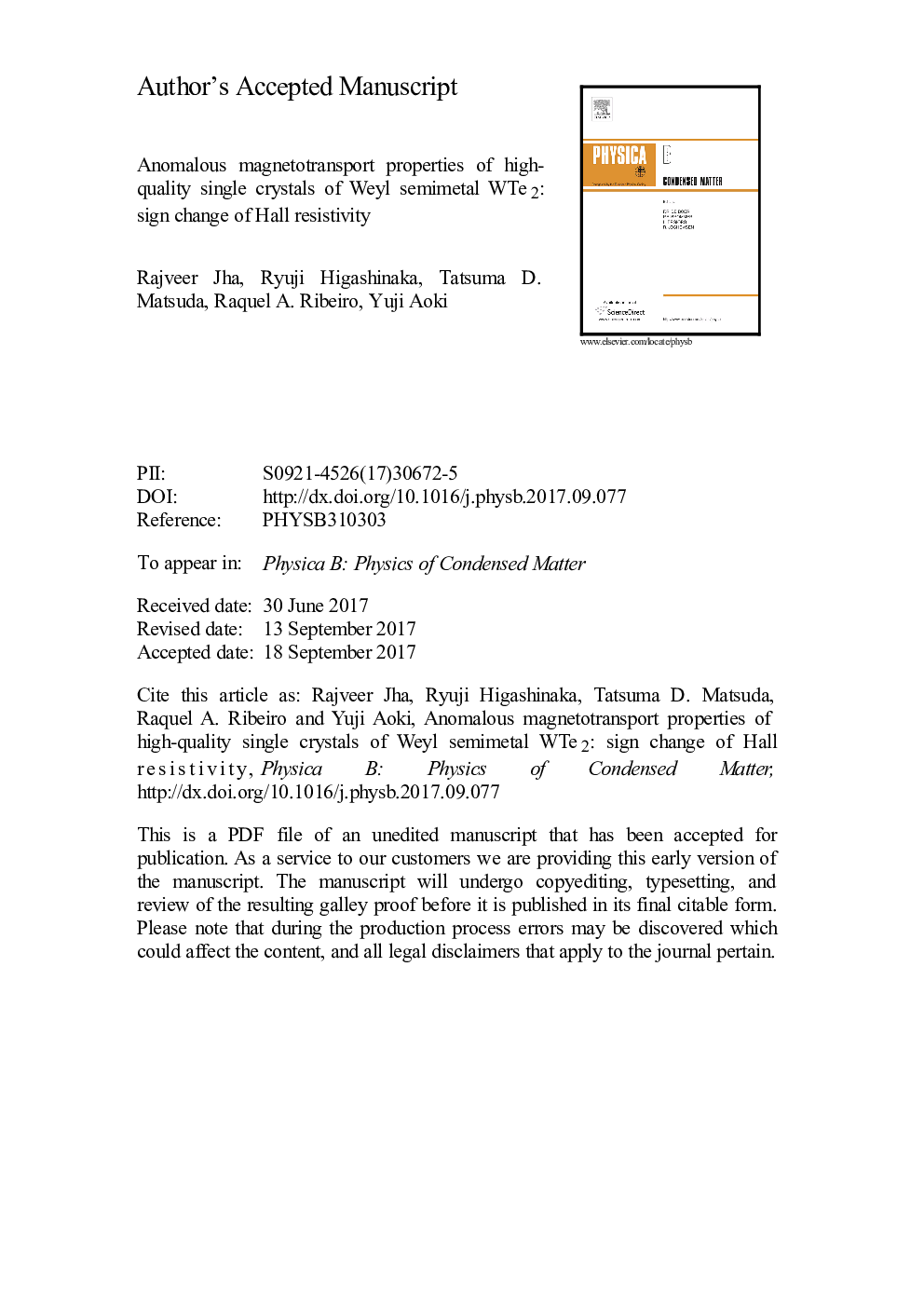| Article ID | Journal | Published Year | Pages | File Type |
|---|---|---|---|---|
| 8160910 | Physica B: Condensed Matter | 2018 | 13 Pages |
Abstract
We report on a systematic study of Hall effect using high quality single crystals of type-II Weyl semimetal WTe2 with the applied magnetic field B//c. The residual resistivity ratio of 1330 and the large magnetoresistance of 1.5 à 106 % in 9 T at 2 K, being in the highest class in the literature, attest to their high quality. Based on a simple two-carrier model, the densities (ne and nh) and mobilities (μe and μh) for electron and hole carriers have been uniquely determined combining both Hall- and electrical-resistivity data. The difference between ne and nh is ~ 1% at 2 K, indicating that the system is in an compensated condition. The negative Hall resistivity growing rapidly below ~ 20 K is due to a rapidly increasing μh/μe approaching one. Below 3 K in a low field region, we found the Hall resistivity becomes positive, reflecting that μh/μe finally exceeds one in this region. These anomalous behaviors of the carrier densities and mobilities might be associated with the existence of a Lifshitz transition and/or the spin texture on the Fermi surface.
Keywords
Related Topics
Physical Sciences and Engineering
Physics and Astronomy
Condensed Matter Physics
Authors
Rajveer Jha, Ryuji Higashinaka, Tatsuma D. Matsuda, Raquel A. Ribeiro, Yuji Aoki,
